Truancy Prevention Strategies

School attendance matters immensely. Even in elementary school, missing just two days a month increases a child’s risk of not graduating. Truancy prevention strategies and programs are a must even for elementary school-aged children.
Good attendance can lead to success in school and an increase in self-esteem.
Absences not only affect the absent student, but they also affect the entire classroom as teachers divide their time and work diligently to catch all students back up after absences.
Missing as little as 10% of school in elementary school significantly affects students’ ability to read.
School attendance is important. Student attendance correlates to success.
I deeply want my students to be successful.
Six Week Attendance Success Program
I decided to implement a six-week attendance success program with my tier-three attendance students. My school social worker and I worked closely to identify students we thought would be the best fit for my program which was going to specifically teach truancy prevention strategies to students and families.
We contacted parents, got permission, and got the attendance success program rolling.
It was wildly successful.
Attendance increased.
Confidence increased.
The students in my group thrived.
It was seriously one of my favorite groups of all time.
Attendance Trackers
Before the group begins, I introduce myself to all students and give them an attendance tracker.
Attendance trackers are a great way to improve student attendance. They help to provide a visual daily check-in that holds students (and parents) accountable.
Knowing that someone is waiting for them to show up daily, increases the chances that they will show up daily.
Having a consistent check-in and a visual representation of their attendance on their tracker sheet increases their desire to attend.

One-On-One Check-Ins
Attendance trackers also offer a great opportunity for quick daily one-on-one meetings with frequently absent students.
My morning duty is to be the over-caffeinated smiling lady holding open the front door saying good morning (way too excitedly).
Students know exactly where I am and how to find me. Their job is to come up to me every day and sign their attendance tracker.
I keep their trackers on a clipboard that I bring with me to morning duty each day. I tied a pen to the clipboard because I always lose my pens.
We say our good mornings, catch up real quick, and set a goal for the day. Afterward, they sign their tracker and are off to class.
Knowing that I am waiting for them to come and sign their trackers helps to keep them accountable and motivated to come to school daily. I think this daily check-in is the single most important truancy prevention strategy that you can implement in your school.
Each day students get their tracker signed, they earn a point. They can trade those points in for prizes.
I created a quick menu of items that they can choose from when they earn enough points (specials pencils, extra recess, lunch with a friend, etc).
It’s a fun and effective way to get kids wanting to come to school every day.
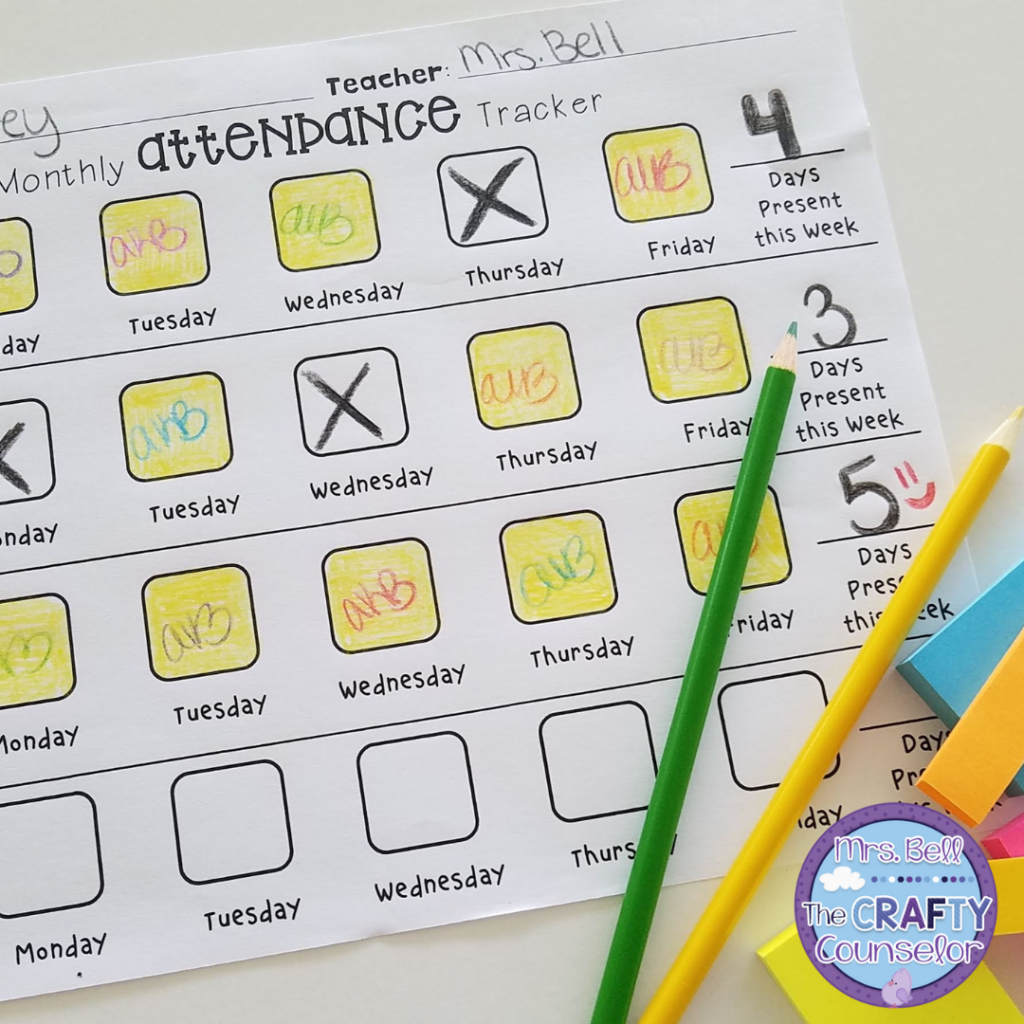
As part of my six-week group, students also attend weekly attendance meetings. At these meetings, students reflect on their attendance from the past week and participate in an attendance skills lesson.
Here is how I run my six-week tier-three attendance small group that targets the most frequently absent and tardy students at my school:
Session One
Get to Know Me Activities
Week One Goals:
- Students Introduce Themselves/Icebreaker Activity
- Create Group Norms
- Take a Pretest
- Complete a “Pieces of Me” or “Why Attendance Matters” Activity Sheet
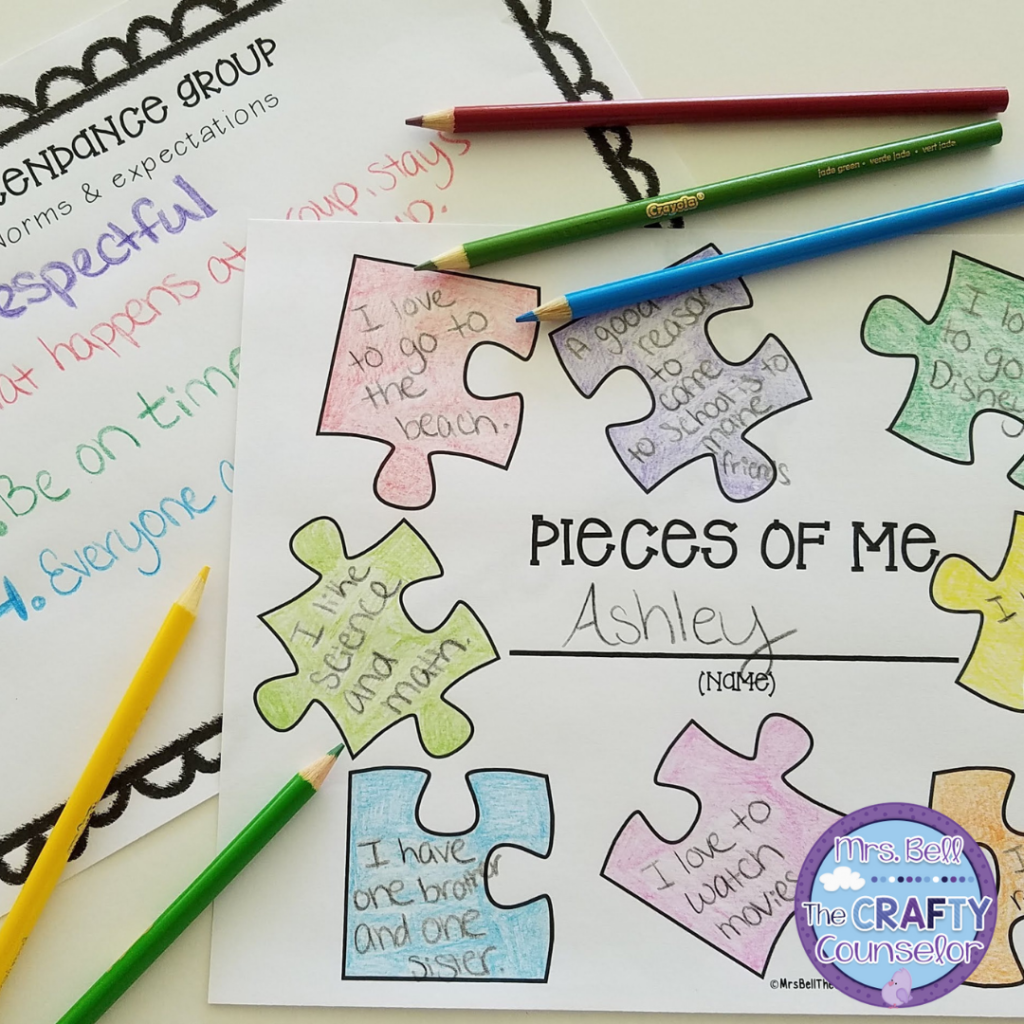

We start the group with a quick icebreaker activity such as high/low. Students introduce themselves and share the best part of their week (high) as well as something they need to work on (low).
If students aren’t yet comfortable, I don’t force them to participate.
We then work together to create group norms. I have found that if students are involved in the creation of the group norms/rules, they are more willing to respect those norms.
All members of the group have to agree on the norm. If all agree, the norm is added to the “Attendance Group Norms and Expectations” sheet.
Once all norms are solidified, have each student sign the sheet agreeing to follow those norms.
Week One Activities
Students then take a pretest so I can gauge their knowledge of what leads to attendance success. The results of the pre-test help me to structure the lessons and identify points to focus on with my group sessions.
Lastly, we complete the “Pieces of Me” or the “Why Does Attendance Matter” activity sheet and play with the Attendance Question Cube. These activity sheets help students to identify why attendance is important and the effects of poor attendance.
Before students leave, we review our morning daily check-in plan and make sure all students know where to meet in the mornings to sign our attendance trackers.
Once all activities are complete, we set an attendance goal (for example, four out of five days attending school on time) and we say our goodbyes.
Session Two
Why Does Attendance Matter?
Week Two Goals:
- Icebreakers/Introductions
- Review Fact Sheet
- Participate in the True/False Statement Sort
- Complete the Activity Sheet
Break the ice by having students give one random fact about themselves. The fact can be anything! I have had students give facts such as, “I put both socks on before I put my shoes on.” or “I don’t like mustard” or “I don’t eat the crust on my sandwiches”.
Any fun fact will do!
Once the ice is broken, we review our attendance from the past week and talk about what helped us to attend school and what harmed our ability to attend school every day.
After we check-in and chat for a bit, we move on to our activities.
Session Two Activities
We review the attendance fact sheet together. I encourage students to show it to their parents and discuss the information.
Creating that home/school connection is especially important for elementary-aged students who cannot get themselves to school on their own. Truancy prevention strategies don’t work as well for elementary-aged students if the parents aren’t involved also.
We especially need the parent’s buy-in to help contribute to student success.

We then start with a true/false card sort. Students think about the statements on each card and decide if they are true or false. They drop the statement card into the appropriately labeled container. We discuss as a group why each statement is true/false.

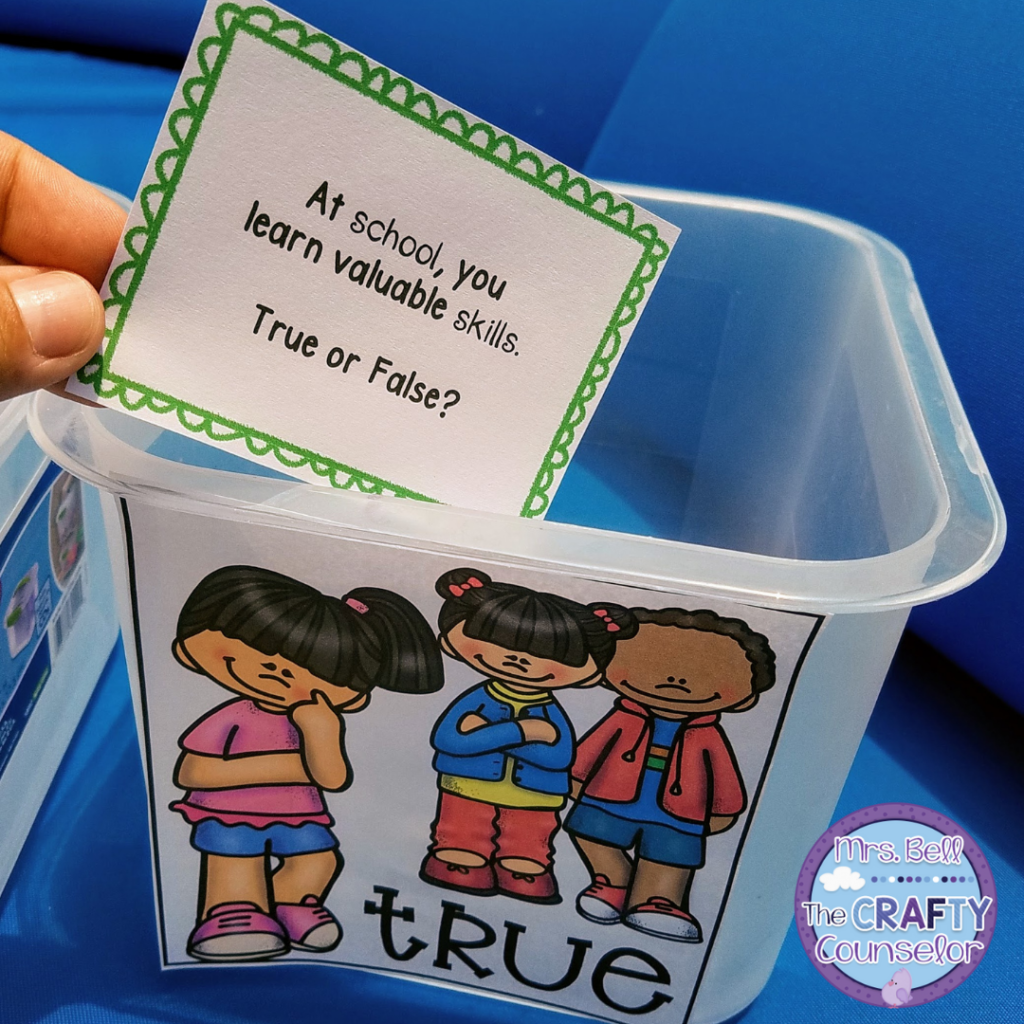
We close out the session with the “What Affects Your Attendance at School” activity sheet.

At the end of the session, we save time to answer any questions, review our check-in plan, and say our goodbyes.
Session Three
Attendance Success is in the Routine
Week Three Goals:
- Review the Plan for Success With Routines Sheet
- Brainstorm Personal Routines
- Complete the Cut and Glue Activity
This week focuses on setting up personal routines that lead to attendance success. Group members are challenged to create their own attendance success routines.
After the icebreaker activity, we work as a group to review the “Plan for Success” Sheet. Afterward, we brainstorm how we can set up our own routines and attendance success strategies.
Students are given time to discuss their current routines and identify areas that can be improved upon. Students work together to brainstorm routines that can help them to attend school in a more consistent manner.

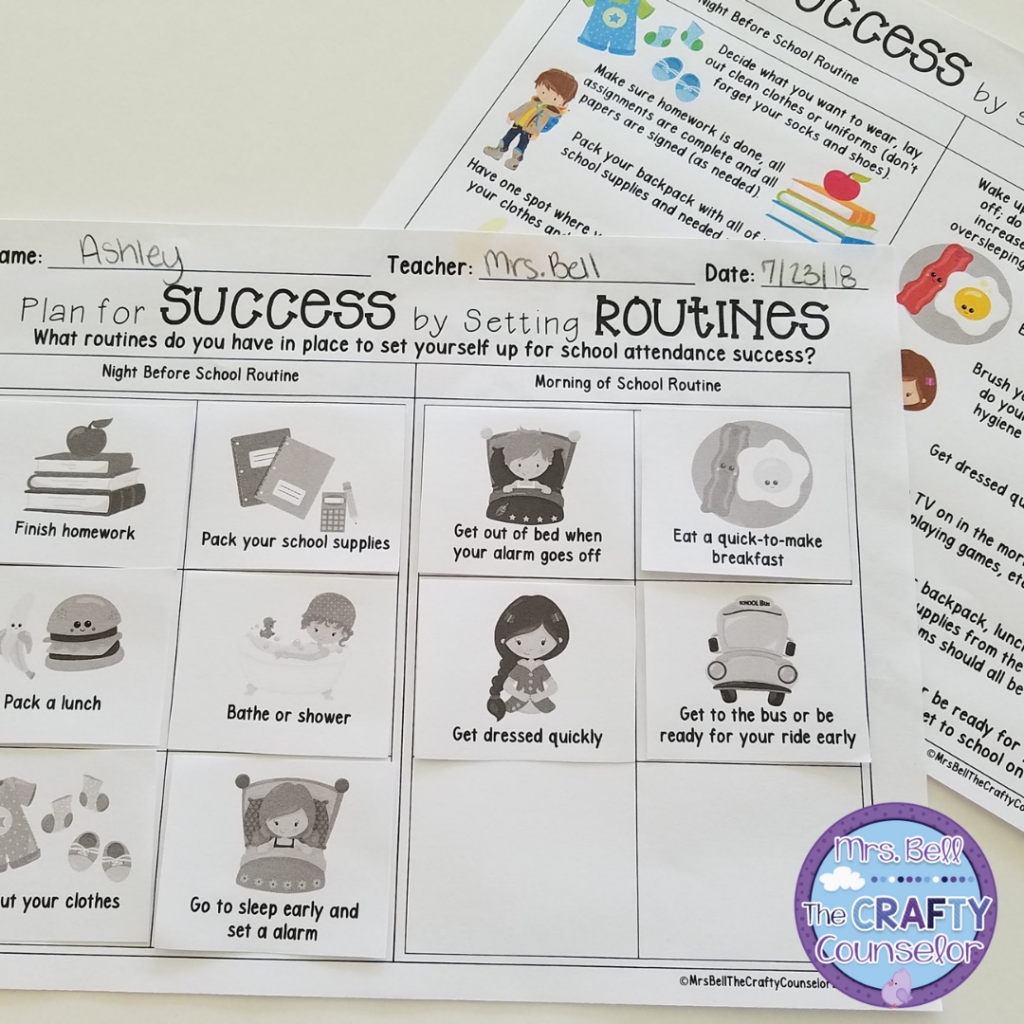
After students discuss and brainstorm routines, they complete a cut-and-glue activity. Students cut and glue ways to create new morning and nighttime routines.
When everyone is done, we say our goodbyes and plan to meet again the next week.
Session Four
Choose Attendance Success
Week Four Goals:
- Complete Attendance Success Puzzles
- Complete “What Would You Do” Activity Sheet
We start the group with an icebreaker such as “share your favorite food”. Students break the ice as they discuss their favorite tasty treats.
This week students participate in activities that help them to think more deeply about the factors and situations that can affect their attendance success.
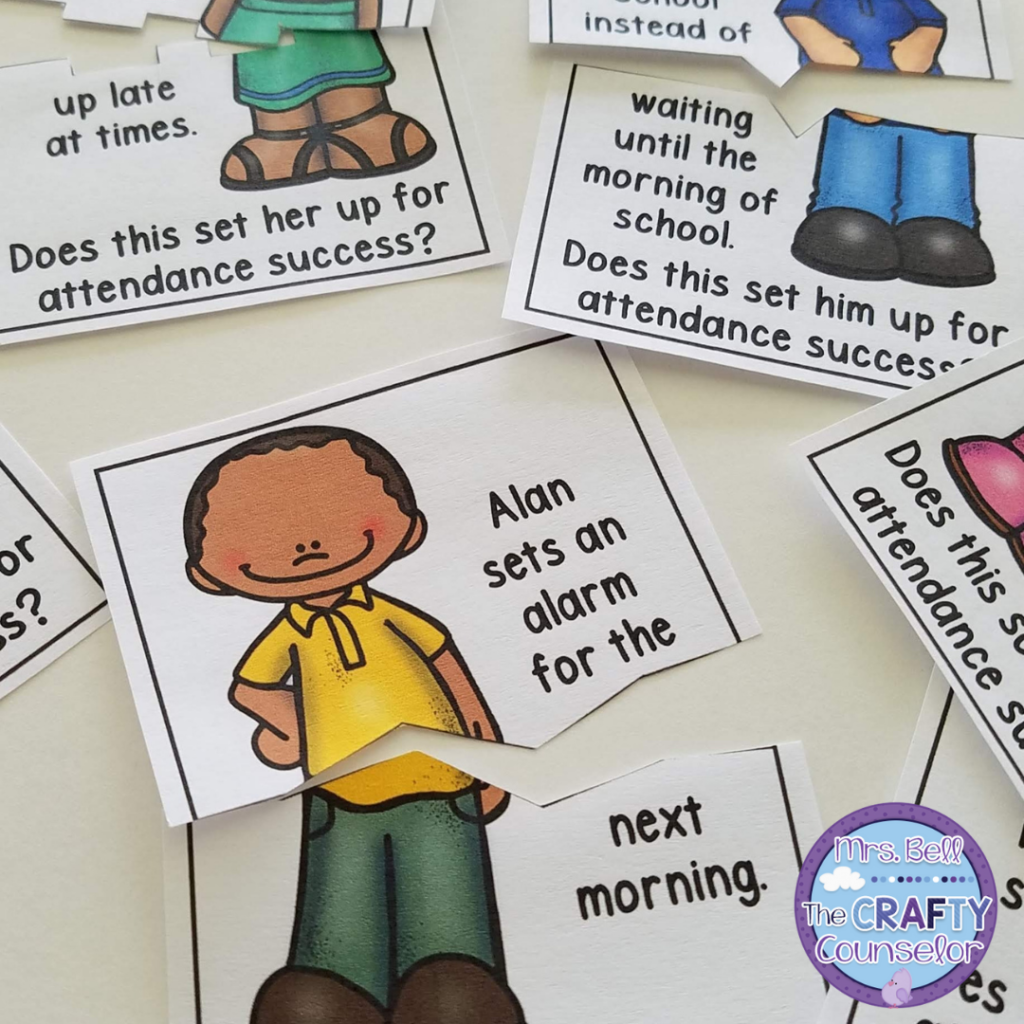
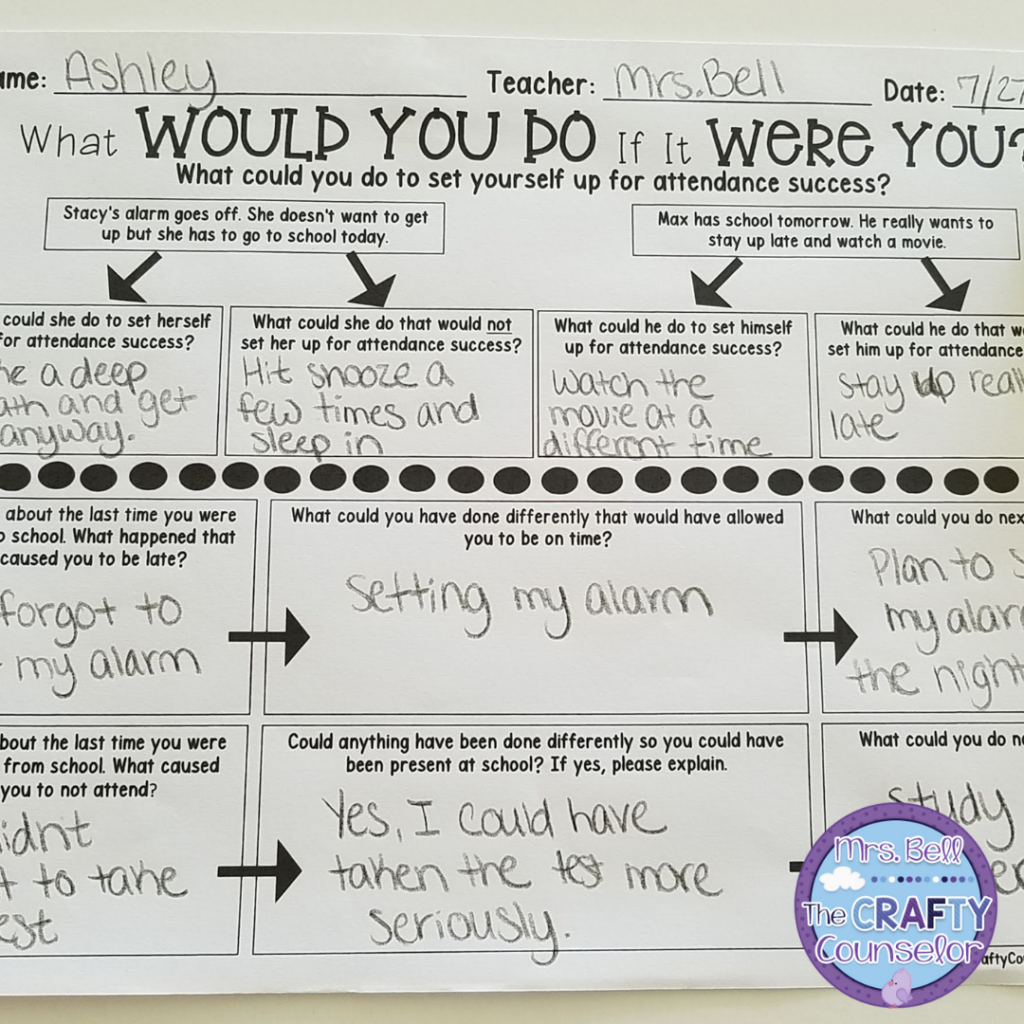

Week Four Activities
We start with the Attendance Success Puzzles. Students work in teams to find the matching puzzle pieces. Once group members find a match and complete the puzzle, they read the information on the puzzle to each other and answer the questions at the bottom of the puzzle.
After the puzzle sort is finished, students are asked to complete the “What Would You Do” activity sheet. This sheet challenges students to think about what they could do in various situations.
Once everyone is done and all questions are answered, we say our goodbyes and agree to meet again the following week.
I take the time to notify students we will only be meeting two more times for our attendance group. I like to prep students early so there are no surprises when the group comes to an end.
Session Five
Life is Full of Options
Week Five Goals:
- Play the Numbers Dice Game
- Participate in Discussion
This week, students are challenged to think about how the choices they make affect their attendance success. They are given various situations that can have multiple outcomes.
Group members think about how the choices made in each scenario change the outcome of the scenario.

Students are able to discuss how powerful their decisions can be. The outcomes are completely different depending on the choices they make.
Group members learn they have the power to make good choices that help lead towards their personal success.
We remind each other that the next week is our last session together. We say our goodbyes and plan when/where to meet for our final meeting.
Session Six
Letter to Self
Week Six Goals:
- Participate in a Self-Reflection Conversation
- Complete Letter to Self Activity
- Outline their Plan for Future Attendance Success
As an icebreaker activity, I ask students the biggest takeaway or biggest lesson they have learned while being a part of this group. It is so fun to see which lessons and truancy prevention strategies stick with which kiddos.
This week, students are asked to write a letter to themselves and goal set for their attendance success. Students are given the templates to write a letter to themselves about the important lessons and skills they learned during group that want to ensure they remember.
Since it is our last time together, I give students time to color and decorate their letters as they discuss as a group all they have learned.
I challenge each student to verbally outline their plan for future attendance success. We agree to hold each other accountable for our goals.


We then close out our group and say our final goodbyes for the group meetings.
Even though our sessions and group meetings are over, I still check in daily with each student for the remainder of the semester.
Continuing the check-in process holds students accountable through the use of the attendance trackers and works as a year-long truancy prevention strategy.

I check in with my students periodically and use my attendance flipbooks to help remind students of their newly learned healthy habits and skills.
Break Down Barriers and Truency Prevention Strategies
Along with working with the students struggling with attendance/truancy, follow up with parents to help break down barriers to student attendance.
Working with parents as part of a team, without coming from an accusatory place, helps overall student achievement.
School counselors and social workers can work together to address barriers that prevent student learning.
In many cases, students who are truant may be struggling with:
- Financial Hardship
- Homelessness
- Moving Frequently
- Victims of Violent Crime
- Poor Health
- Mental Health Concerns
- Social Issues
- Bullying
- Learning challenges
If you aren’t already, utilize your school social workers for help with attendance and truancy. School social workers can help offer needs assessments, home visits, community referrals, and links to resources.
School social workers can be the school counselor’s source of support when it comes to tackling truancy issues and implementing truancy prevention strategies and programs.
Parent Attendance Support
Talking to parents about truancy and attendance concerns can be uncomfortable. Here are a few tips to help make the conversation a bit easier.
- Engage parents by talking about their hopes and dreams for their children.
- Provide information about the effects of absenteeism on school performance.
- Help parents identify the barriers that may be causing absenteeism
- Help parents to create a plan to address barriers
- Encourage parents to have regular conversations with their child about the importance of
being in school every day - Remain sensitive to a family’s unique situation and challenges
You Can Do It, Too
Give your students the gift of strategies that lead to better attendance with this six-week attendance success small group intervention. Students will learn vital skills that will help improve their attendance and school performance.
Download your own copy of this attendance success six-week small-group plan from my TpT store.
Let’s Connect
- Visit the Crafty Counselor Blog
- Teach With Me on TeachersPayTeachers
- Follow Me on Facebook
- Connect With Me on Instagram
- Pin With Me on Pinterest
You may also want to check out my Attendance Flipbook and my Girl’s Group lesson plans. I’ve also got you covered if you need a small group for friendship skills.

Give your students the gift of strategies that lead to better attendance with this six-week attendance success small group intervention. Students will learn vital skills that will help improve their attendance and school performance.
Read more...
Share it...
You might also like...

Hi, I'm Ashley!
I am a school counselor who helps educators to change the lives of students with engaging, creative, and meaningful SEL resources.







